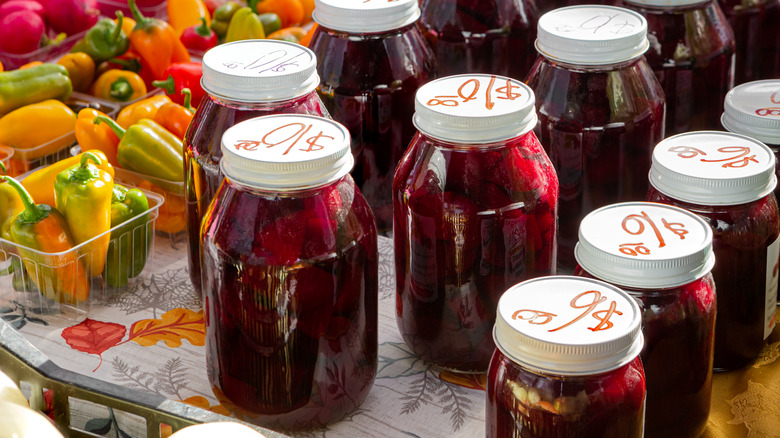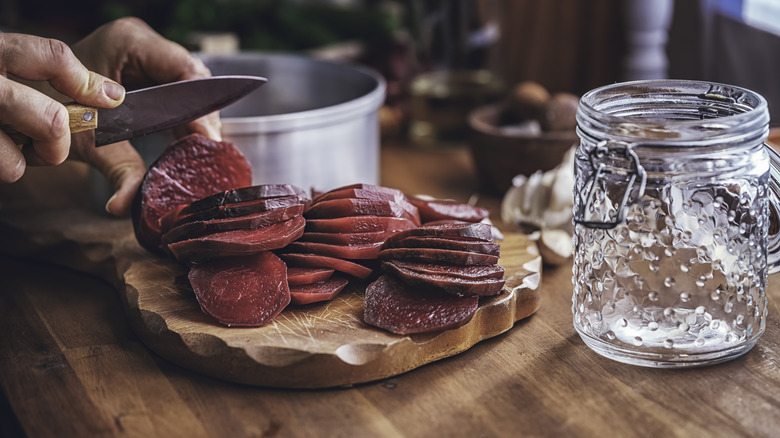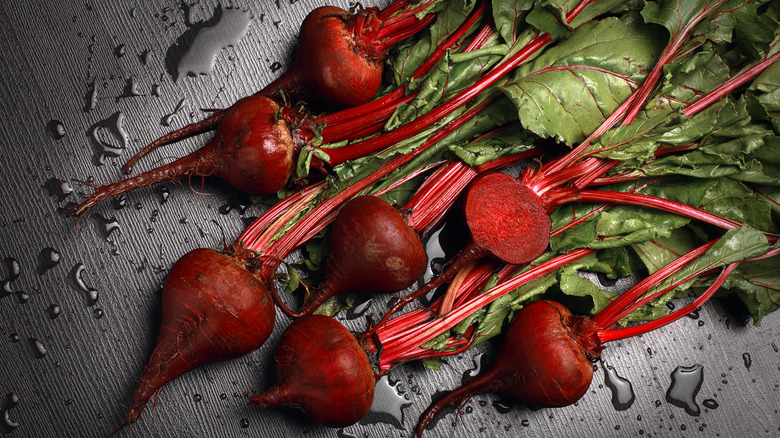How Long Do Home-Canned Pickled Beets Last?
As a versatile ingredient, pickled beets are a great item to keep in your pantry. And if you want to try your hand at home canning, they're an easy vegetable to prepare. While pickling acts as a powerful preservative, nothing lasts forever. Accordingly, pickled beets only have a maximum lifespan of four days once the jar has been opened. Additionally, opened jars must be stored in the refrigerator to maintain quality and keep them safe for consumption.
Before opening, you're fine to keep your jar of pickled beets in a cabinet or pantry. In this case, make sure the area where you're storing the jars is well protected from moisture and heat, as both conditions can negatively impact quality. Prior to opening, home-canned pickled beets can last as long as 12 months. That means you can make and store a few jars to ensure your home is chockful with beets for salads, snacking, and even Australian-style burgers topped with pickled beets and fried eggs.
These timelines only apply when the appropriate canning practices are used. Because even seasoned home canners can make mistakes from time to time, you must be able to tell when beets have gone bad.
How to tell if your pickled beets have gone bad
There are numerous signs to look for that indicate your pickled beets should be discarded due to concerns about spoilage. Bulging lids are a major red flag, as they signal that pressure is increasing inside the jar. Pressure typically increases due to the gases created by bacteria as they populate. You should also check out the lid seal. Under ideal circumstances, the lid will remain depressed until you open the jar, at which point it will make a satisfying "popping" sound. If the lid moves up and down when you press on it, the jar isn't sealed correctly.
In the event that the lid is in good shape but you find mold on the underside after opening, spoilage is likely. Also, pay close attention to the odor coming from the jar. Bad smells should be taken seriously; spoiled pickled food typically smells more sour than usual. By the same token, never eat pickles that are soft and resting in cloudy or foamy canning liquid, as the liquid will be negatively impacted by bacterial growth.
Tips for pickling beets to ensure top quality
Farmer's Almanac shares some reliable pickling tips to keep your pickled beets in good shape for as long as possible. When it comes to your canning recipe, you must follow it to the letter. Unlike other types of food preparation, tweaking a canning recipe can have disastrous results. In addition to potentially ruining your beets, you also face a higher chance of foodborne illness if you make the wrong adjustments. For instance, consider that canning vinegar must have an acetic acid concentration of at least 5%. In this case, undiluted distilled white vinegar is usually a safe bet.
Another essential safety precaution to take is prepping your containers. On an episode of "The Martha Stewart Show," pickle maker Rick Field of pickle brand Rick's Picks emphasized this while demonstrating how to make his Phat Beets flavored with rosemary, ginger, and lemon. "When you start the process, you need to sterilize the jars for about 15 minutes," he said.
You'll also get far more favorable results if you start with fresh beets. Bunches of beets with green leaves still intact are usually fresher than trimmed beets, so they're best for canning. Additionally, beets should be free of obvious defects, exhibit a deep red color, and have an intact taproot, which is found on the bottom of the bulbous beet. Upon finding the perfect bunch of beets, prepare them for canning as soon as possible to ensure they maintain their quality.


